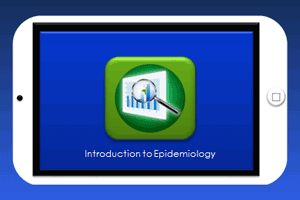Introduction to Epidemiology
Epidemiology is the “study of distribution and determinants of health-related states among specified populations and the application of that study to the control of health problems.” — A Dictionary of Epidemiology
These materials provide an overview of epidemiology investigations, methods, and data collection.
Topics
- Key concepts and terms
- Calculating rates
- Approach and methodology
- Data sources and study design
Slide Presentation

These slide sets are in the public domain and may be downloaded and customized as needed by the user for informational or educational purposes. Permission from the Centers for Disease Control and Prevention is not required, but citation of the source is appreciated.
Suggested Citation:
Centers for Disease Control and Prevention (CDC). Introduction to Public Health. In: Public Health 101 Series. Atlanta, GA: U.S. Department of Health and Human Services, CDC; 2014. Available at: https://www.cdc.gov/publichealth101/epidemiology.html.
E-learning Course

These are links to self-study e-learning courses on this topic.
Quick-Learn Lessons take 20 minutes or less to complete. Lessons are also accessible from mobile devices.
- A Brief Introduction to Data Cleaning
Learn to identify the common errors in data reporting and describe the importance of maintaining accurate data throughout the data collection process. - Create an Epi Curve
Learn how to create a visual display of the onset of illness among cases associated with an outbreak. - Using an Epi Curve to Determine Mode of Spread
Learn how to determine the outbreak’s likely mode of spread by analyzing an epidemic curve. - Using an Epi Curve to Determine Most Likely Period of Exposure
Learn how to interpret an epidemic curve and determine the likely period of exposure that led to the outbreak. - Introduction to Epidemiology Course on CDC TRAIN